If you’re into exotic eats, Peru is the perfect place to satisfy your ‘unusual’ cravings. Guinea pig in Peru, locally known as cuy, is a popular type of meat that you probably won’t find back home and is perfect for expanding your palate.
In other parts of the world, the guinea pig is considered a household pet, but in Peru, it’s much more. It’s a part of South American culture and cuisine, and contributes to the livelihoods of many Peruvians.
Let’s explore how the guinea pig in Peru became a domesticated animal, and how it is prepared for consumption:
What are Guinea Pigs?
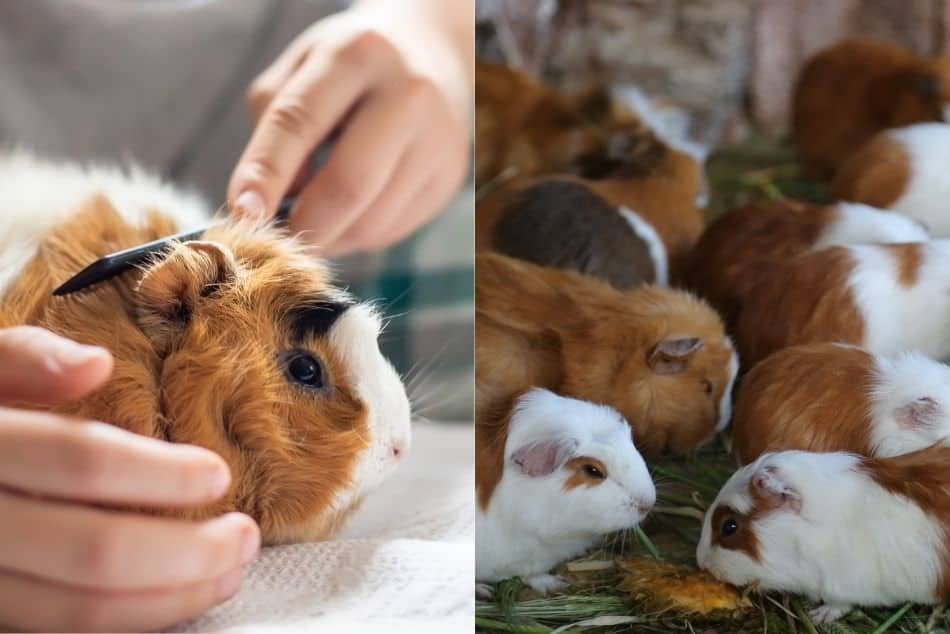
In North America, Europe, Australia, New Zealand and the United Kingdom guinea pigs are furry pets loved for their docile nature and friendly demeanor. They are sold in pet shops and by breeders to adults and children alike, and are kept in cages and pens, much like other similar pets such as rabbits.
In other contexts, they are held as test subjects in labs. In fact, the name “guinea pig” has become synonymous with any form of test subject due to their extensive use in scientific research.
Guinea pigs aren’t pigs, and are actually a species of rodent called Cavia porcellus (little pigs). They aren’t from Guinea like some people think, instead, they originated in the Andes region of South America.
While the origins of the name are unknown, the most popular theories are:
- They got their name from the squawking sound they make
- They arrived from the port of Guinea to Europe
- They were sold for 1 guinea
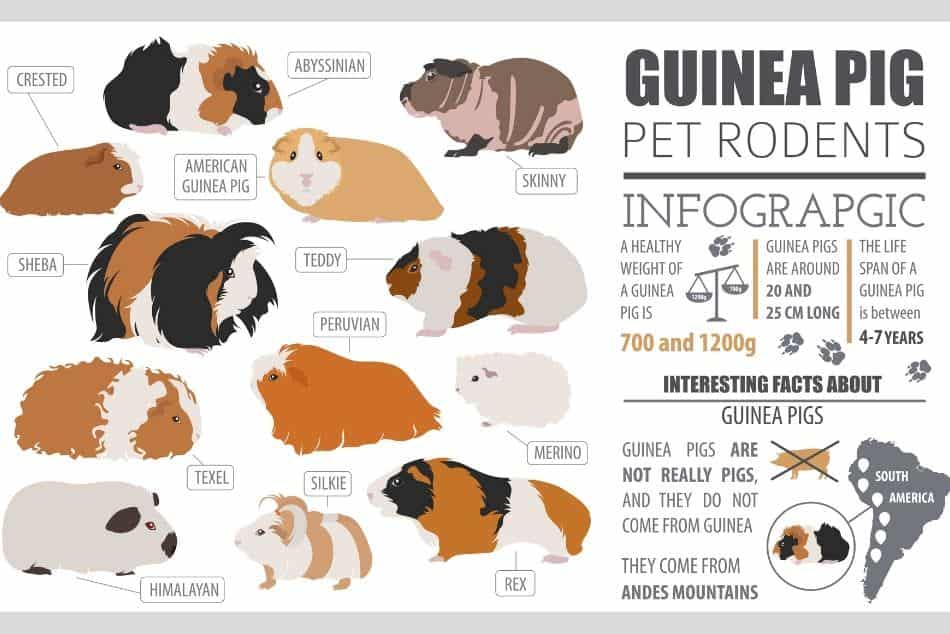
There are 13 breeds of guinea pig, but they are all tail-less with petal-shaped ears and eyes that are positioned on opposite sides of their head.
Guinea pigs average a weight of between 1.5lbs and 2.5lbs and have constantly growing teeth, which they keep at a comfortable length by gnawing and chewing. These creatures are natural prey as they are herbivores, which means they have a plant-based diet.
In South America where there is a large population of wild and domesticated guinea pigs, they are reared and hunted for their meat, and are also used for folk medicine and religious ceremonies.
Guinea Pig in Peru: Origins
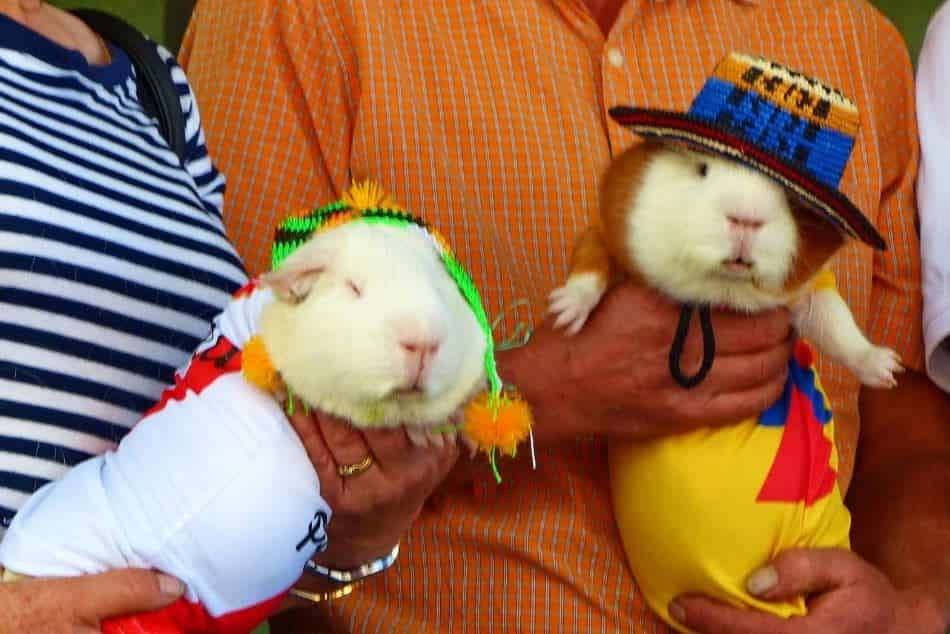
Guinea pigs have become a part of the local Andean cuisine. This practice dates back as far as 2000 BCE when Incan and other indigenous peoples in modern-day Peru, Ecuador, Bolivia and other parts of the Andes domesticated these animals.
Guinea pigs also had a huge role in Peruvian medicine and religion, and were used to diagnose illnesses, particularly black guinea pigs. They were also worshiped by the Inca people and given to their gods as sacrifices.
From around 1200 CE – 1500 CE up to the arrival of Spanish colonizers, the Incas and other tribes bred various breeds of guinea pigs, which were later traded in Europe as exotic pets for the wealthy. The result was the introduction of the guinea pig to other parts of the world where they are now kept as pets.
Today, guinea pigs are still kept by the native Indians of the Central Andes and modern Peruvians. They are better known as cuy by the Quechua people, but also go by other names such as cobayo, conejillo de Indias, huanco (Bolivia), curi (Colombia) and acurito (Venezuela).
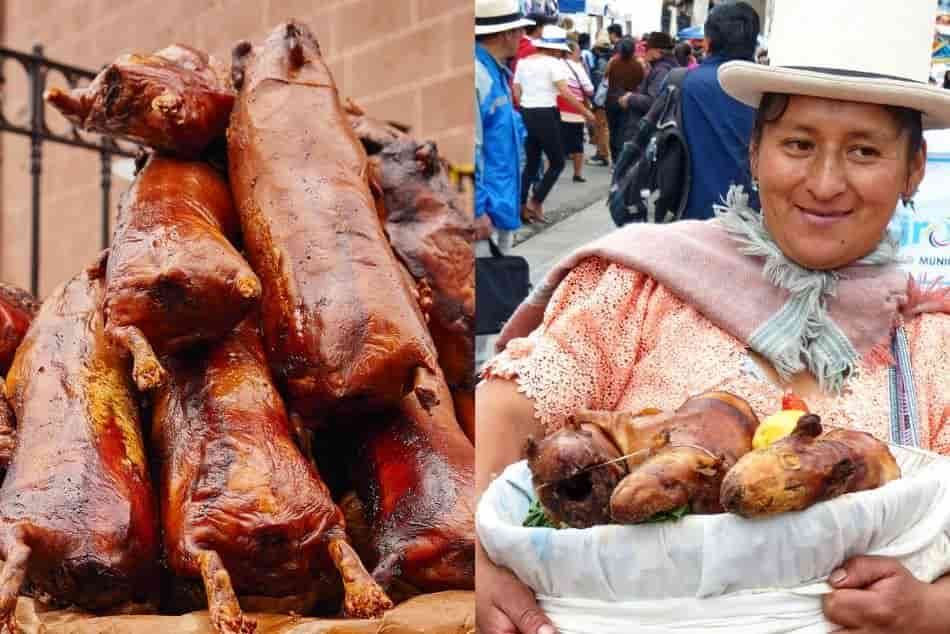
Guinea pigs in Peru are still traditionally eaten for religious purposes and their meat is exchanged as a gift. Peruvians even have a National Cuy Day that is celebrated on the second Friday in October to keep the traditions alive and to promote the consumption of cuy in international markets.
Another popular festival centered on the guinea pig in Peru is jaca tsariy. Here, designated people go door-to-door ‘collecting the cuys’ for communal purposes.
It is estimated that roughly 65 million guinea pigs per year are eaten, and this number continues to increase as more and more tourists visit to try this meat.
Where is This Dish Served?
Cuy or guinea pig in Peru is served pretty much all over the country in homes, in restaurants called cuyerías and as street food. A popular way to eat cuy is on skewers as kebabs on the street or when gathering with a group of friends.
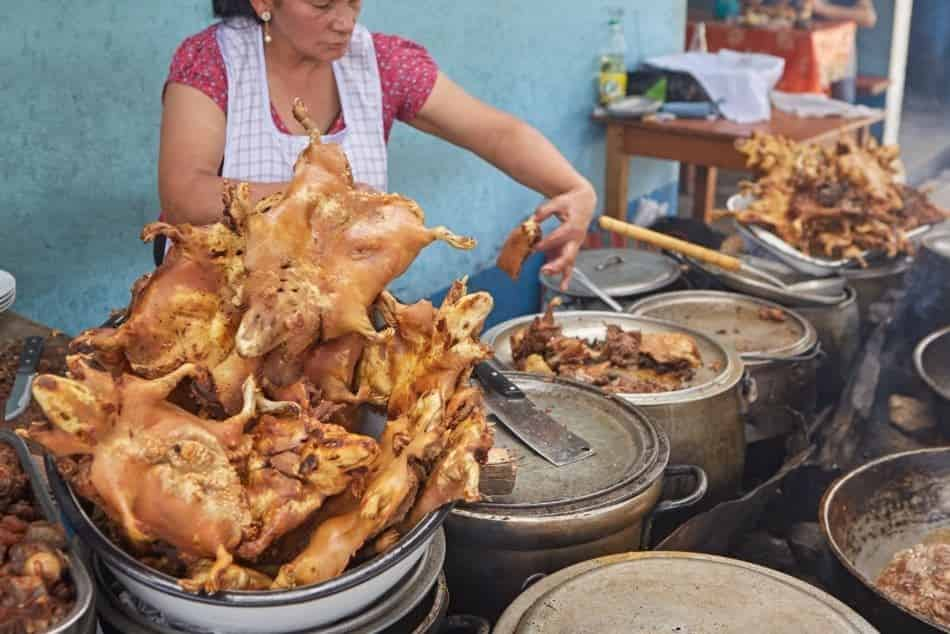
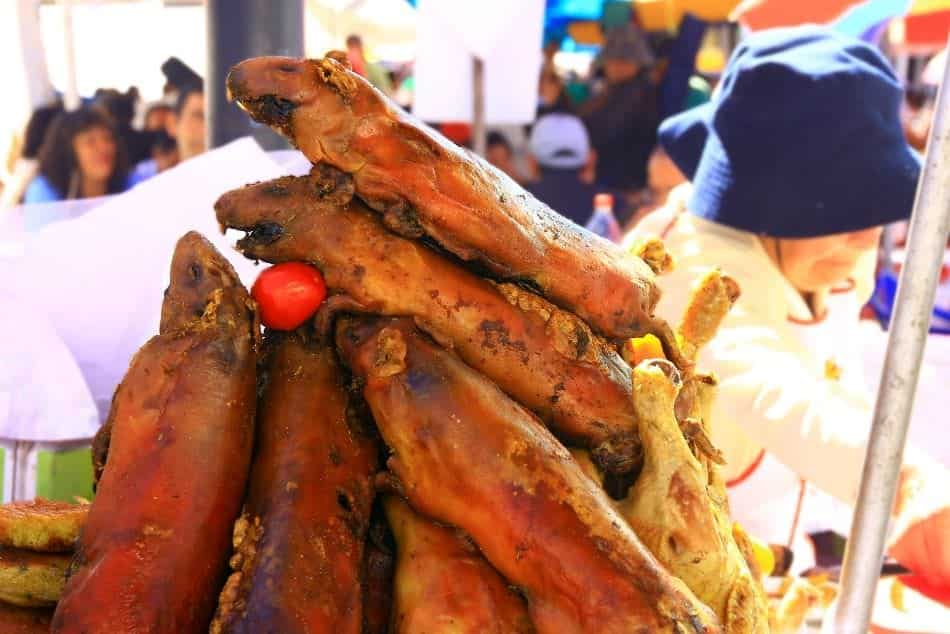
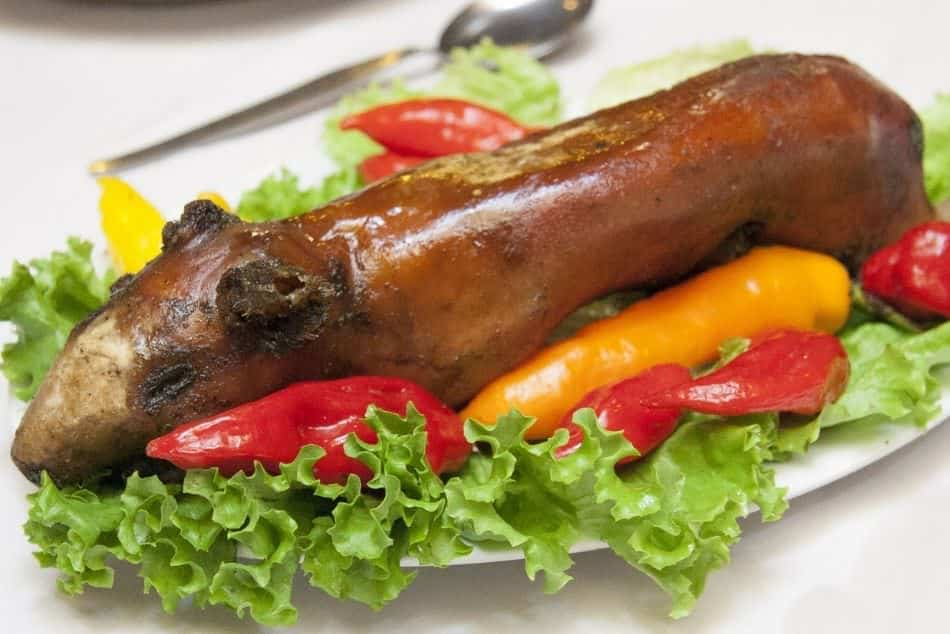
Cuy is not limited to Peru: you can find guinea pig meat being sold widely in Ecuador and Bolivia. When you buy cuy from cuyerías, a minimum 10% tip is expected by your waiter to show your gratitude for the meal.
Be sure to bring cash. Many of the local establishments that sell cuy do not accept credit or debit cards.
Note that Peruvians tend to eat cuy on special occasions so you won’t find it being served daily in households in urban areas. However, rural Peruvians are different, as are indigenous people in the Andes region.
How is the Meat Acquired?
In the past, guinea pig meat was acquired largely through hunting. As time passed, more people began to raise them on farms.
Today, the majority of guinea pigs in Peru are reared on farms, though some people still hunt wild guinea pigs. Some families will raise guinea pigs for their own purposes, or sell them to others in their community.
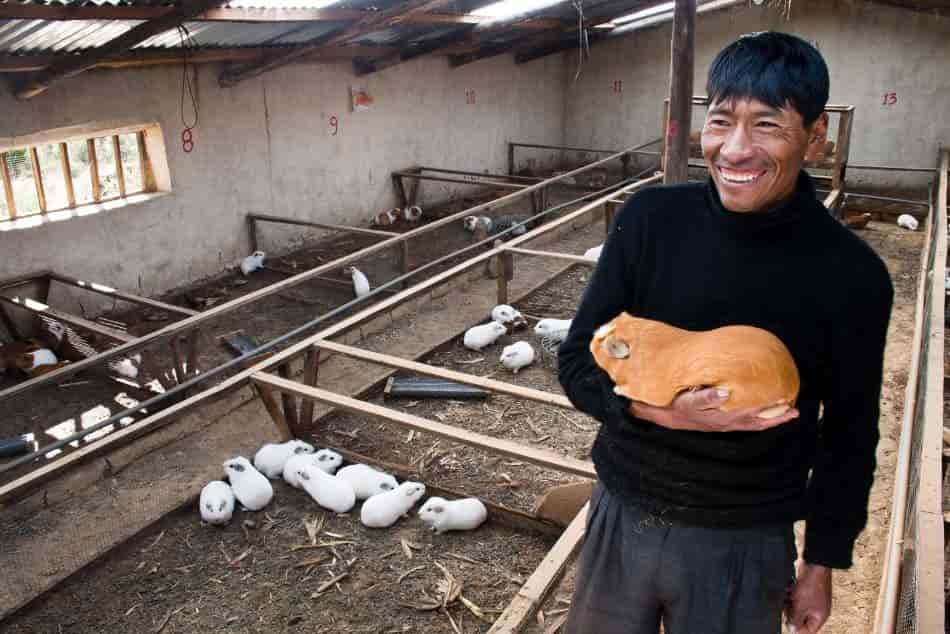
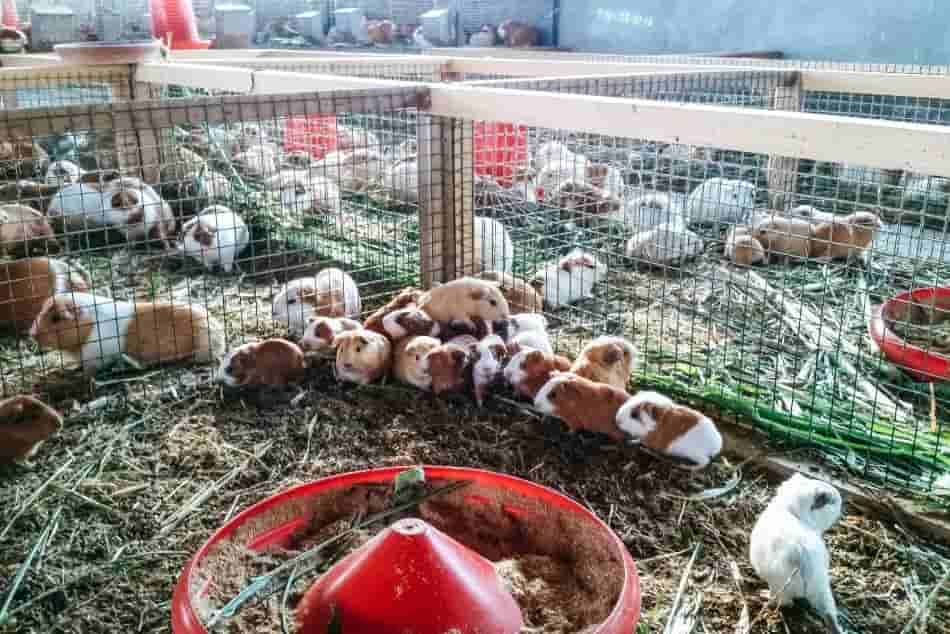
It’s not unheard of to visit a home in rural Peru and find an entire room filled with guinea pigs! Many of the guinea pig farmers are women who stay at home and tend to them while the men are away at work in the city.
What is the Best Way to Eat it?
Guinea pig in Peru is usually grilled whole, but it may also be deep-fried. After being gutted and cleaned, no other parts are removed, and people literally eat it from head to toe.
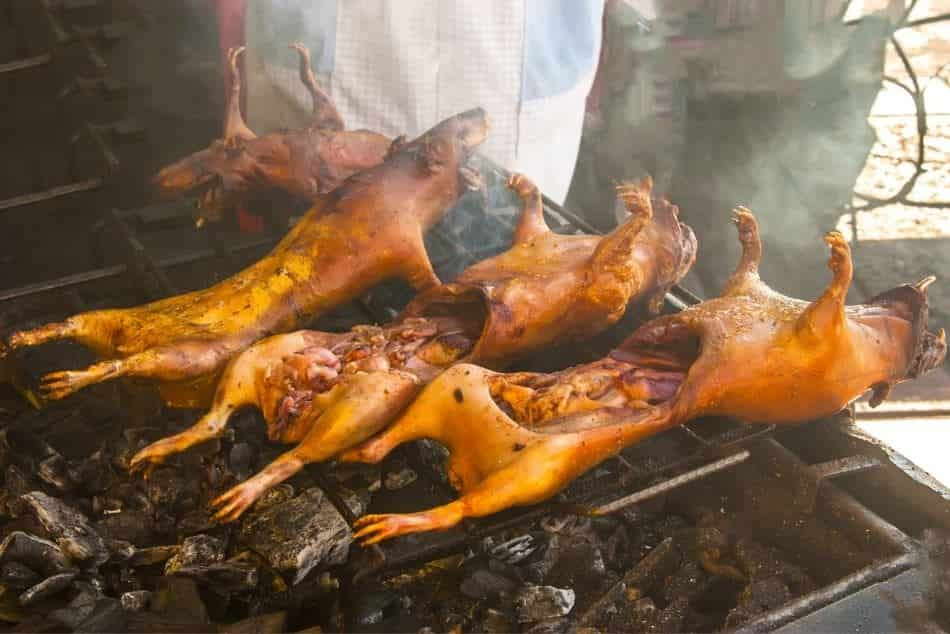
Fried guinea pig in Peru is called cuy chactado. It is traditionally squashed or flattened between stones then seasoned with garlic, salt and lemon juice. After being fried, it is served with sweet potato slices and roasted peanuts.
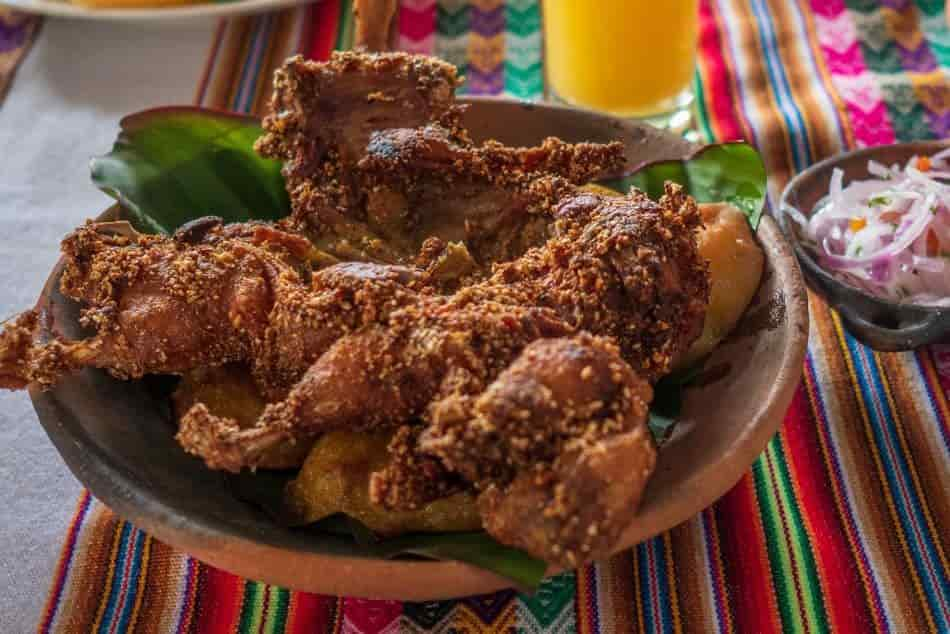
Roasted guinea pig in Peru is called cuy al palo. It is traditionally prepared over a spit. This is most often served with potatoes, corn on the cob and salsa criolla (an onion relish).
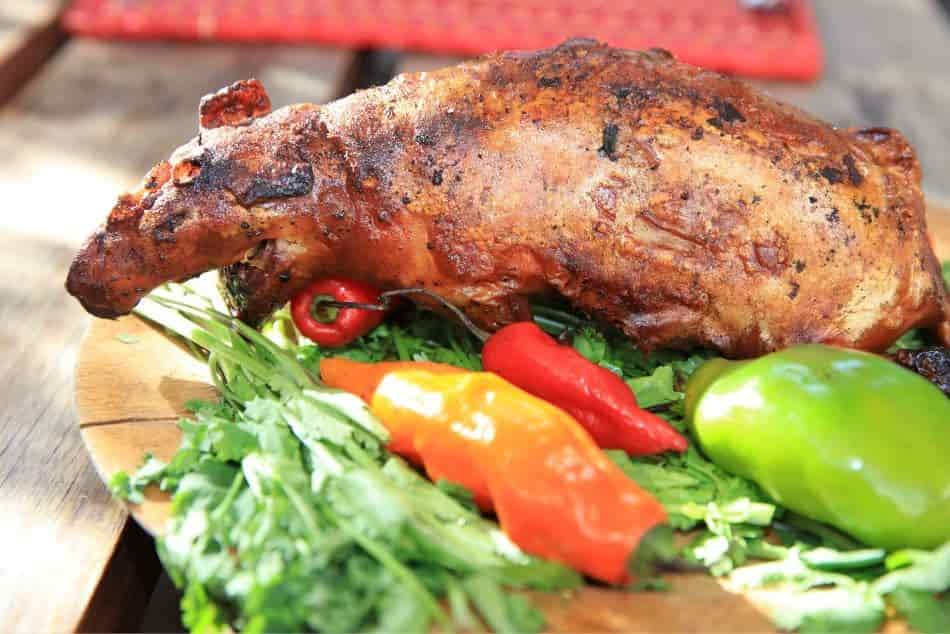
Guinea pig in Peru may also be served with a spicy sauce called salsa haucatay, which consists of aji amarillo chili peppers.
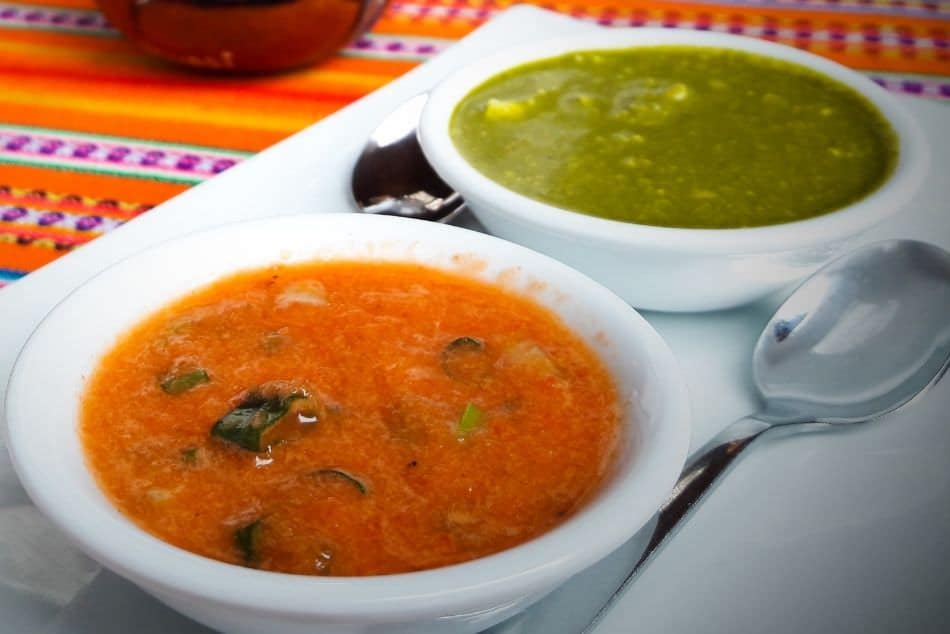
You can have any beverage of your choice. Think of it like you would any gamey meat. You can have it with anything from beer to pinot noir.
If you’re eating with friends, be sure to get your own serving of cuy. One isn’t usually enough for two people unless you only want to give it a taste and not have it as a whole meal.
If you are offered guinea pig in Peru from a local at a birthday party or other celebratory event, have a bite. It is considered rude to turn down guinea pig in Peru.
What Does It Taste Like?
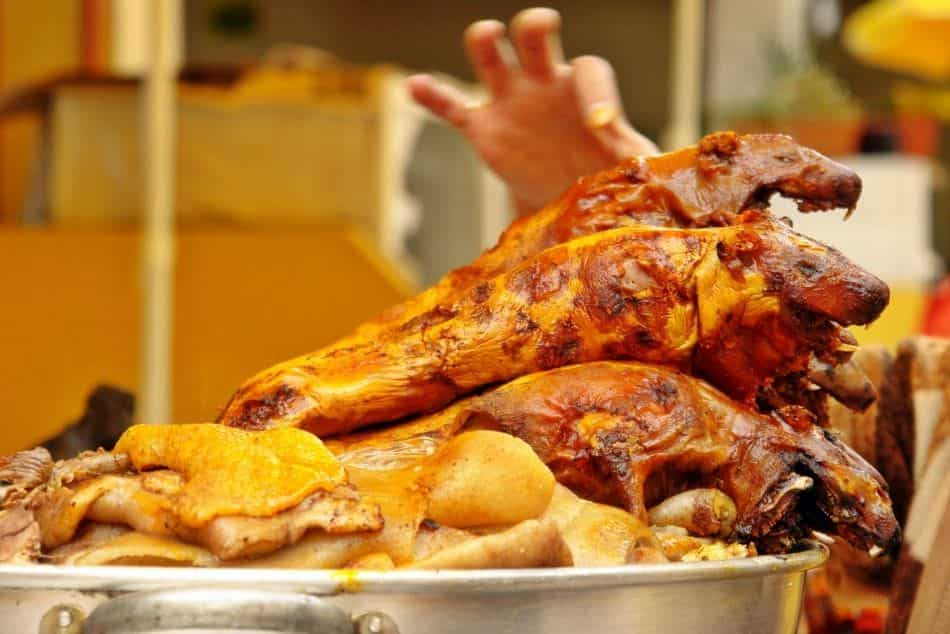
Cuy, or guinea pig in Peru, is said to have a gamey taste, and texture similar to rabbit and wild foul. Peruvians sometimes compared eating guinea pigs to eating chicken wings, where you have to use your teeth to rip the meat from the bone.
Cuy is eaten with the hands since forks are sort of useless for getting all the meat, so it can be pretty messy. For this reason, you don’t have to worry about etiquette when in a restaurant. You’ll still be given a spoon or fork for the gravy and side dishes.
Is Eating Guinea Pig Wrong?
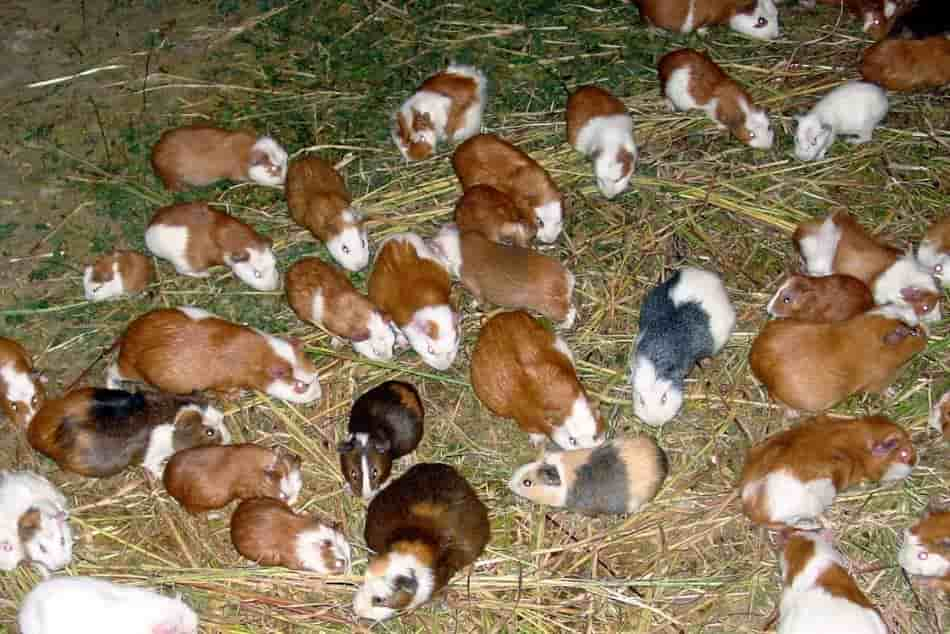
It may feel “wrong” to eat guinea pigs, since they are considered pets in many parts of the world, but wait until you find out how much more sustainable this practice is when compared to other forms of meat.
Every year in South America, sections of rainforest are cleared to accommodate cattle farming. This means that all the wild animals that live within that section of forest will lose their natural habitat and may become more vulnerable. Similarly, raising chickens contributes to pollution of the soil and water with pathogens, and can render the area unpleasant due to the smell and pests such as flies.
Guinea pig farming, on the other hand, requires less space and most guinea pig farmers do so at home, whether in their back yards or even rooms in their houses. Eating guinea pig meat helps to support the livelihoods of farmers who are not able to compete with the cattle and poultry industry. And, since a lot of Peruvians live in poverty, guinea pig meat can provide the necessary lean protein in their diets. Eating guinea pig in Peru is perfectly safe once it is properly prepared. The government is even trying to break guinea pig meat into the international market!
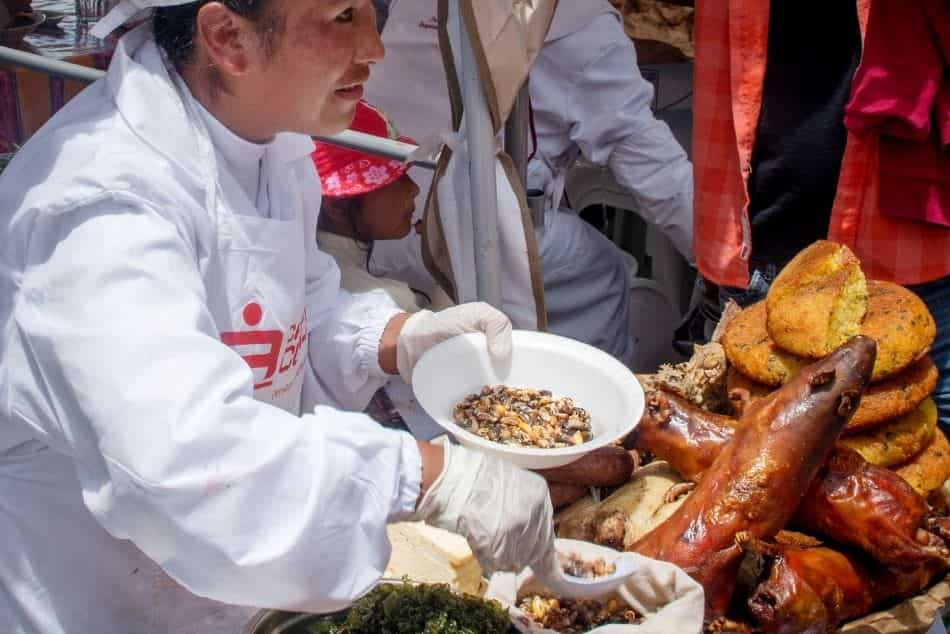
Conclusion
When you try eating guinea pig in Peru for the first time, you might start to wonder why you haven’t been eating fried or roasted guinea pigs this entire time! Or you may not like it, but you won’t know until you try.

binance sign up bonus
Saturday 27th of December 2025
Thank you for your sharing. I am worried that I lack creative ideas. It is your article that makes me full of hope. Thank you. But, I have a question, can you help me? https://www.binance.info/tr/register?ref=MST5ZREF
jili7
Friday 19th of December 2025
Jili's AI-powered platform, like Jili77 com, offers a fresh take on online gaming by using smart tech to boost player chances. Still, always gamble responsibly and manage your bankroll wisely.
Binance推荐
Monday 15th of December 2025
Your point of view caught my eye and was very interesting. Thanks. I have a question for you.
Binance账户
Saturday 13th of December 2025
Your article helped me a lot, is there any more related content? Thanks!
binance signup
Friday 28th of November 2025
Can you be more specific about the content of your article? After reading it, I still have some doubts. Hope you can help me. https://accounts.binance.com/da-DK/register-person?ref=V3MG69RO